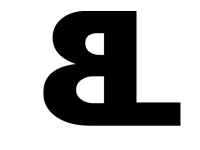Wisconsin Fire Inspector Practical Exam Notes
Station 1
You are shown a slide of the outside of an occupancy. Write down everything you need to know including address, business name, type of occupancy……
You are then shown a series of photos of code violations. While it is entirely possible they could be tricky, most of them are straightforward code violations that you should spot right away. Blocked exits. Obvious wiring issues. Storage issues.
You need to correctly identify an issue for 5 out of 6 slides.
Station 2
Using the descriptions you wrote for station 1, you need to identify the specific NFPA codes which are violated. It is helpful to have an idea which chapters contain which material. The index in the back of your NFPA 1 book is very helpful as well.
We were told before hand by some people that you need to make sure to cite the year. While no one was heard complaining about getting failed for it, you never know.
Make sure to properly cite the NFPA standard, including the edition year. Like NFPA 1 2012:10.2.2.1
You need to correctly identify 3 out of 4 to pass this station.
Station 3
There are four different parts of this you could end up doing. Like other certification tests, you only do one of them. If you fail, you then do a different one.
Station 3a
Identify occupancy using both NFPA and IBC. Write out the full name for the NFPA occupancy type, like “Residential”. You are given the reference sheet you should have seen in class which shows you the IBC types. Make sure to review it a bit before you take the test. Write out the IBC code in the short version, like R-1.
5 out of 6 are required to pass.
Station 3b
You need to use the occupant load factor and the square feet in the room to compute the maximum occupant load. While we have not seen this station, you may have to look up the net factor from the chart in your NFPA book. Chapter 10 we believe. You are given a calculator. Two numbers to deal with. Don’t let it scare you just because it is math.
Station 3c
You ate shown slides and you need to identify which type of construction the building is, as in I, II, III, IV or V.
3 out of 4 to pass.
Station 3d
First you must identify which picture is the correct way to use a pitot gauge.
The way to solve these problems is clearly shown in your textbook. You are given the graph paper and a chart which equates PSI to GPM. You need to plot the two values given.
The flow is them identified and you record the pressure and GPM. While we did not do this station and you should reference your textbook, we believe the you plot the static and residual points on the graph paper. You then plot a line between those points and continue it on until it crosses the 20psi point. That should give you the value for the flow at 20 psi.
Station 4
Fill out every field on the form. Write out each NFPA violation you cited from the book earlier along with how to correct it. Use the address and business name you wrote down earlier.
You have 10 minutes for this station which sounds like a lot, but there is a lot of writing and almost everyone seemed pressed for time.
Make sure to write your name, sign it and add a compliance date.
Station 5
This station is broken into two sections of which you do both.
Residential - You will be given a key and some rules for things like where detectors need to be placed. You are shown a slide for 2 minutes and you must identify what it missing. While it sounds tricky, it is pretty much laid out for you. You need to look at the schematic and identify the missing components. Things like smoke detectors, pull stations, audible alarms……
Commercial- You are shown a schematic and are asked a question to identify something. You are likely given a table and/or key which you use to identify something on the schematic.
Our test taker had the most anxiety about this station and it ended up being very straightforward.
Station 6
There are four possible stations for station 6.
6a - post inspection meeting with building owner, cover all parts of report. Explain nicely. Address questions. Get signature from mock building owner.
6b - courtroom; state no opinions. Do not speculate. Stick to facts. Remain professional and courteous.
6c - Determine if a permit is needed; Refer to Table 1.12.8a in NFPA 1. It tells you if a permit is needed for a particular thing.
6d - Take a citizen complaint. Validate that it is an actual violation in NFPA 1; document results of inspection; compliance date; date/time/name/phone/location of person making complaint; let person making complaint know results; file/store report
Station 7
Bring completed 2 page report on your job shadow experience. If you do not bring this on test date, you automatically fail. You should have completed it during your class.
About the author

